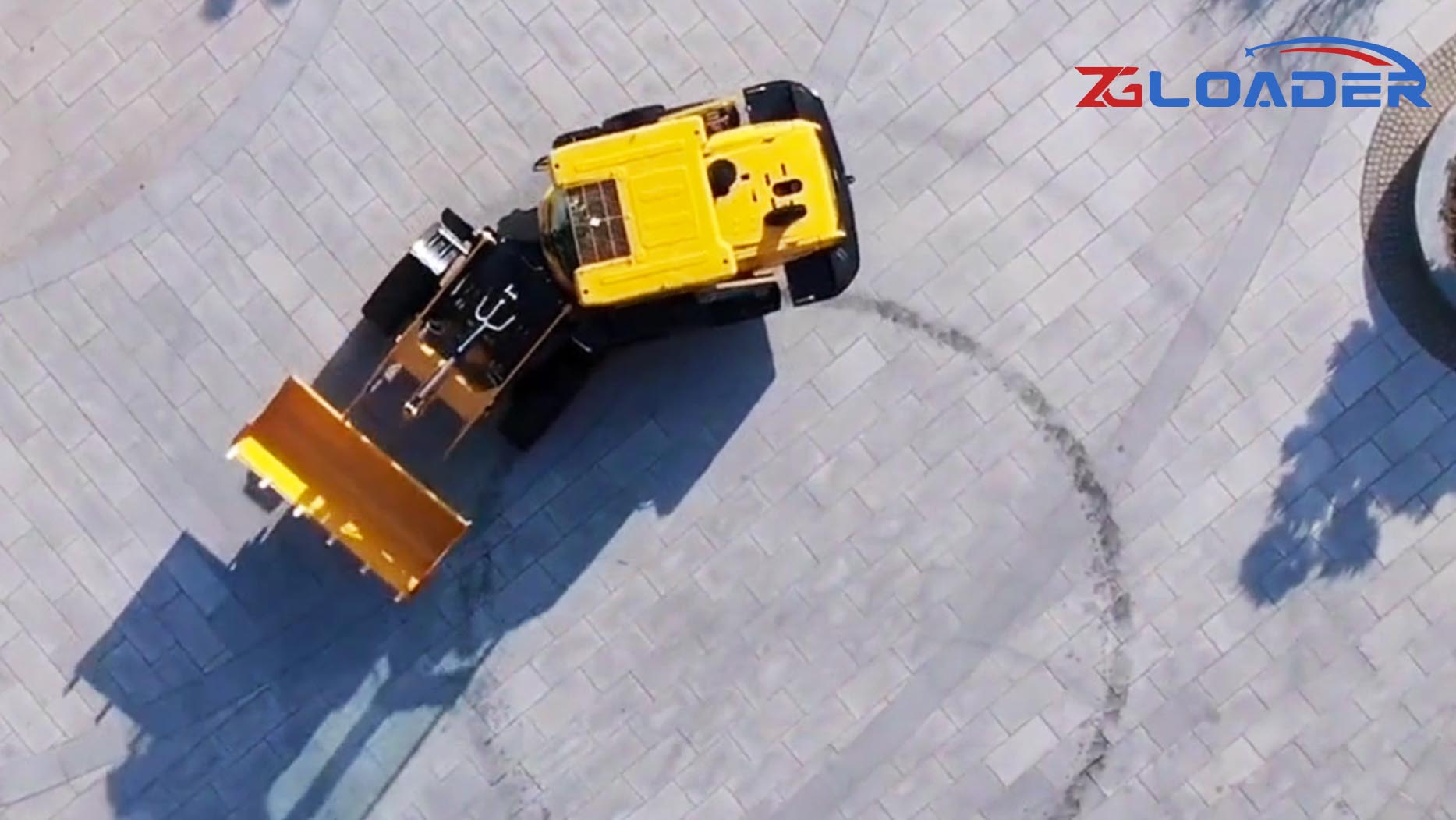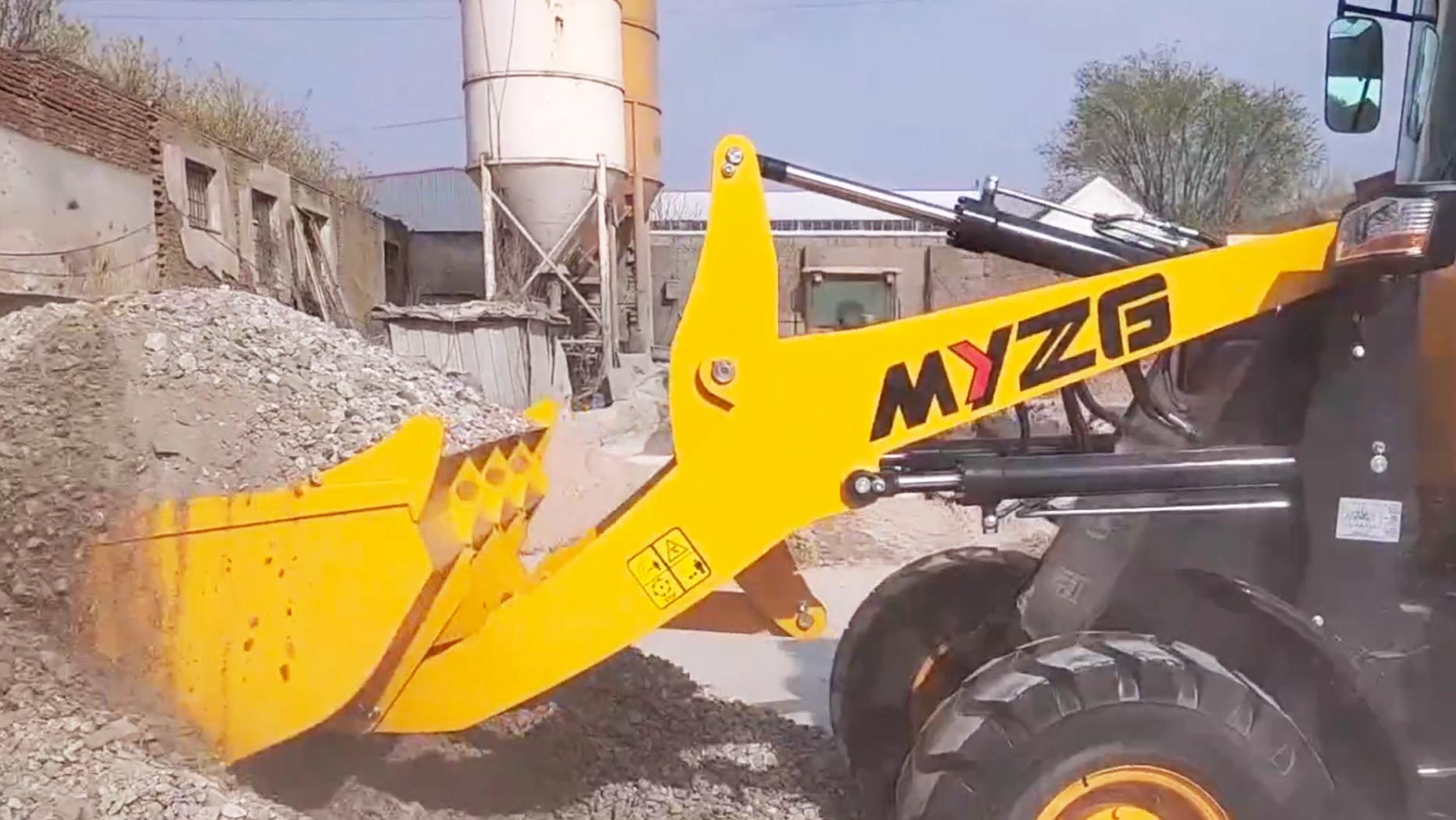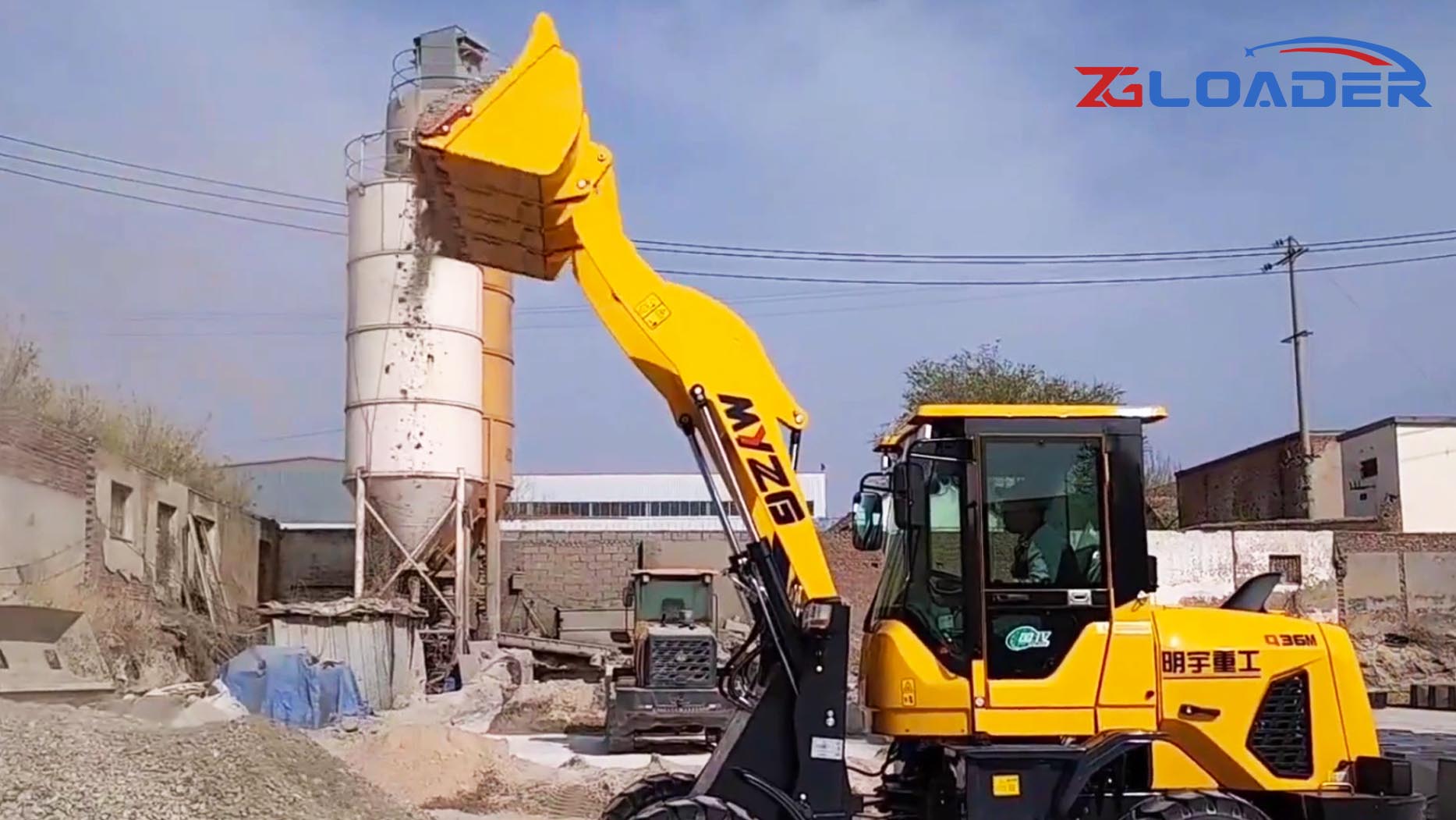Wheel loaders are a ubiquitous sight on construction sites, material handling yards, and even agricultural settings. Often seen moving piles of aggregate, loading trucks, or clearing debris, the question arises: can wheel loaders dig? The answer, while seemingly simple, is nuanced and depends heavily on context. While wheel loaders can excavate and move material, they aren't designed for the same kind of digging as dedicated excavators. This article will delve into the capabilities and limitations of wheel loaders as digging implements, exploring their strengths, weaknesses, appropriate applications, and the crucial differences that set them apart from purpose-built excavators.
Understanding the Wheel Loader's Design and Function:
A wheel loader is fundamentally a material handling machine. Its primary function is to scoop, lift, and transport loose materials. This is achieved through a large bucket attached to a hydraulically actuated loader arm. The machine's wheeled design provides excellent maneuverability, making it ideal for working in confined spaces and moving quickly across relatively flat surfaces. This maneuverability, coupled with the bucket, allows for a degree of digging. However, the digging action is significantly different from that of an excavator.
How Wheel Loaders "Dig": The Scoop and Carry Method:
Wheel loaders primarily "dig" through a process of scooping and carrying. The operator drives the loader into a pile of material or a bank, lowering the bucket and using the machine's forward momentum to force the bucket into the material. The bucket's shape and the loader's powerful hydraulics allow it to penetrate and fill with loose material like gravel, sand, or topsoil. Once the bucket is full, it's lifted and the material can be transported to another location.
This method is effective for moving large volumes of loose material quickly. It's ideal for tasks like:
Loading trucks: Wheel loaders excel at loading aggregate, soil, or other bulk materials into trucks for transport.
Stockpiling: They can efficiently move materials into stockpiles or create new stockpiles.
Material handling: Wheel loaders are used in recycling facilities, ports, and other locations where bulk materials need to be moved.
Cleanup: They can be used to clear debris, level surfaces, and perform general site cleanup.
Limitations of Wheel Loader Digging:
While effective for certain tasks, wheel loaders are not designed for extensive or precision digging. Their design presents several limitations:
Limited Digging Depth: The bucket's design and the loader arm's geometry restrict the depth to which a wheel loader can dig. They are not suited for deep excavations like trenches or foundations.
Inability to Dig in Hard or Compacted Ground: Wheel loaders struggle to penetrate hard or compacted soil. Their digging action relies on forward momentum and the weight of the machine, which is insufficient for breaking up dense materials.
Lack of Precision: Compared to excavators, wheel loaders offer limited control over the digging process. They are not ideal for tasks requiring precise shaping, grading, or trenching.
Inefficient Digging in Confined Spaces: While maneuverable, wheel loaders require space to maneuver and effectively scoop material. They are less suited for digging in tight corners or confined areas compared to excavators.
Stress on the Machine: Continuously using a wheel loader for aggressive digging can put excessive stress on the drivetrain, hydraulics, and bucket, leading to increased wear and tear and potentially premature failure.
Safety Concerns: Attempting to dig in unstable or overly compacted ground can create hazardous situations, potentially leading to machine tipping or material slides.
The Role of Attachments:
Several attachments can enhance the digging capabilities of a wheel loader, though they still don't transform it into a true excavator. These attachments can broaden the range of tasks a wheel loader can perform, but they also have limitations:
Bucket Teeth: Adding teeth to the bucket's leading edge improves its ability to penetrate slightly harder materials. However, this is still limited compared to an excavator's digging force.
Multi-Purpose Buckets: These buckets can be configured for various tasks, including digging, grading, and material handling. They offer more versatility but still don't match the performance of specialized excavator buckets.
Forks: While primarily for material handling, forks can be used for light digging and cleanup of debris.
Excavators vs. Wheel Loaders: A Critical Distinction:
The fundamental difference between excavators and wheel loaders lies in their design and intended purpose. Excavators are purpose-built digging machines. Their articulated arm and rotating superstructure allow for a wide range of digging motions, including digging below grade, creating trenches, and precisely shaping the ground. Excavators generate significantly more digging force and can handle much harder and more compacted materials.
Wheel loaders, on the other hand, are optimized for material handling and transportation. Their primary function is to move large quantities of loose material quickly and efficiently. While they can perform some digging tasks, their capabilities are limited compared to excavators.
When to Use a Wheel Loader for Digging:
Despite their limitations, wheel loaders can be suitable for certain digging tasks, particularly when:
Moving loose materials: They are ideal for digging and moving materials like gravel, sand, and topsoil.
Short-distance transport: Their wheeled design makes them efficient for moving materials over relatively short distances.
Loading trucks: They excel at loading excavated material into trucks for hauling.
Cleanup operations: They can be used for light digging and cleanup of debris.
Conclusion:
In conclusion, the answer to "can wheel loaders dig?" is a qualified yes. They can excavate and move material, but their digging capabilities are limited compared to purpose-built excavators. Wheel loaders are primarily material handling machines, excelling at scooping, lifting, and transporting loose materials. While attachments can enhance their digging abilities, they are not designed for the same level of precision, depth, or force as excavators. Understanding the strengths and limitations of wheel loaders is crucial for selecting the right machine for the job, ensuring both efficiency and safety on the worksite. For serious digging, especially in hard or compacted ground, or when precision is paramount, an excavator remains the appropriate choice. The wheel loader, however, remains an invaluable and versatile machine for a wide range of material handling and light digging tasks.
Post time:Feb.14.2025



